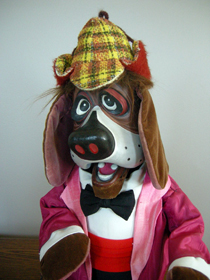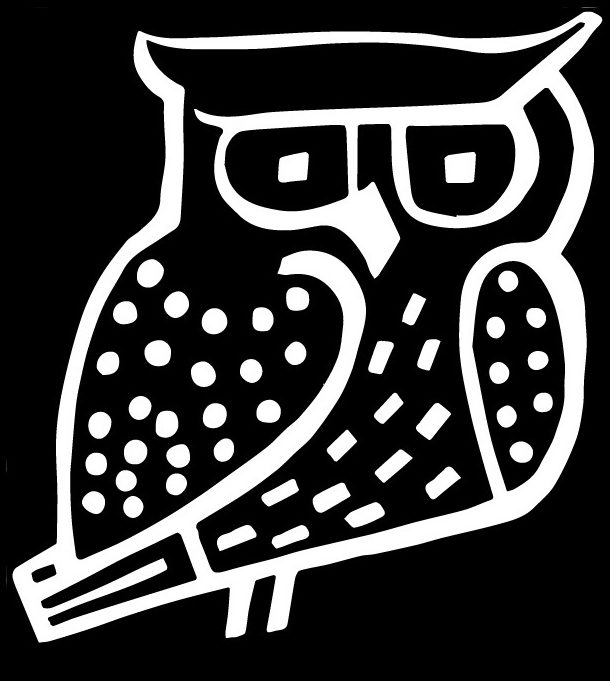Now that the coffee house could accommodate more people than our old location on Rideau Street, it became feasible to include theatre in the programme, and I decided it was a good time to use the theatre training which I received from René Provost at l’Ecole d’ Arts Dramatiques de Hull, and from Harold Greenberg of Montreal (who came every weekend), who used the well-known Actors Studio method. I had acted in many plays with the St Gérard’s parish local group “Les Masques” and with René Provost’s Arts Dramatiques de Hull group. Although I was a great supporter of theatre, I must admit that I was not such good actor.
In September 1962, we inaugurated French theatre at Le Hibou. Edgard Demers, whom I had met in the French theatre group, directed “The Lesson” by Eugene Ionesco. The first week was in English, and the next week was in French with “La Leçon.” Actors included Gerard Gravelle, Huguette Beaucaire-White, and Madeleine Sanscartier. As Edgard was also theatre critic for Le Droit newspaper, Le Hibou always received very good promotion from Le Droit—well earned, I would add.

In December 1962, I produced and directed “Too Many Guys for One Doll,” an original musical satire on municipal affairs and Charlotte Whitton, Ottawa mayor during the early 1960s. The script was authored by “Isabel Edward,” a pen name for Penny Faulkner, my wife at the time, whose first name was Isabella, while my second name is Edward. The music was composed by the remarkable Julian Leigh, who also accompanied the actors on piano.
The satire was set in medieval times, larded with feminist barbs, and featured “Lotti Lollard” jousting with her male councillors and a rogue building developer, “Champ de Lot” (Campeau), played by Charles Gravelle, whom I met at l’Ecole d’Arts Dramatiques de Hull. Lotti (Charlotte Whitton) was played with great verve and enthusiasm by the incomparable Elsa Pickthorne. The city councillors were played by Tom Dunleavy, Maurice Bigras (also from l’Ecole) and Peter Hodgson. Peter (a regular from Rideau Street who later took the stage name of “Sneezy Waters”) was somewhat reluctant as he had never been in a play before. I convinced him by telling him he was already half way there, since he was a folksinger familiar with the stage.
“Too Many Guys for One Doll” was extremely well received, with a packed house for the duration of the two-week run. I was pleased, as it was the first play that I directed at Le Hibou. Only other bookings prevented a longer run. Charlotte Whitton of course came, and she adored the play, thanked Elsa profusely, and said that Elsa would have made a wonderful mayor. Later in 1964, I pursued my foray in theatre but this time instead of directing musicals, I turned to avant garde, in part because I was more interested in contemporary theatre and in part because Ottawa did not produce any such theatre. (The National Arts Centre was not yet up and running.) So the first avant-garde play I did was “The Maids” by Jean Genet with a cast that included Marilyn Nixon, Pierrette Vachon (another former graduate from l’Ecole d’Arts Dramatiques de Hull) and Sheila McCook.

In 1965 I directed “Victims of Duty,” by Eugene Ionesco with cast of Gerard Gravelle (now a television host for Radio Canada), Taunia Gravelle (a radio announcer), Noel Almay, Elizabeth Langley (a professional dancer), Robert Whelan (a local poet) and Jean Honeywell. In 1965 I directed “Three Actors and Their Drama” and The Blind Man, both by Michel de Guelderode with a cast including Luba Goy (later with the Royal Canadian Air Farce), Bill Walther, and Don Grant. On the same bill was “Play Without Words” by Samuel Beckett with Luba Goy and Johni Keyworth.
Later in June 1963 the same group (Penny as writer, Julian Leigh as composer and myself) reassembled and put on another musical satire, this time based on John Diefenbaker, entitled “Do You Have Prince Albert in the Can?” (At one time, Prince Albert tobacco was sold in cans. Diefenbaker was born and lived in Prince Albert.) The name was somewhat obscure—perhaps we should have called it simply “Dief the Chief.” In any case, it proved not as popular as “Too Many Guys for one Doll.” Maybe because of the fact that Dief’s popularity was on the way down, a satire on him lost its punch. The actors were Joe O’Brien, George Tremblay (a CBC co-worker), Ken Wilson and Nika Rylski. I also directed “The Day the Whores Came Out to Play Tennis” in 1966. More on that later.

Having children, I was very interested in having children’s theatre on a regular basis at Le Hibou on Saturday afternoon. The Little Owl Children’s Theatre was established with George Bloom at the helm in February 1964. This went on for about a month until Noreen Young Puppets with Fred Little began to perform regularly. I had met Noreen Young when I was studio director on a CBC children’s show called “Jack in the Box” (Jack Pearse was the host) where Noreen’s puppets were featured on a regular basis. The Noreen Young Puppet Show regularly attracted a dedicated audience. I know my two children enjoyed it very much, although I had to keep an eye on them. My son, Stephane, loved to get into the smoked meat, and Nadine, my daughter, loved the black forest cake.


